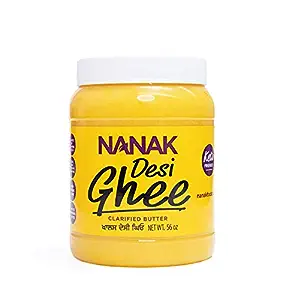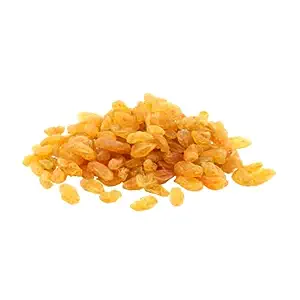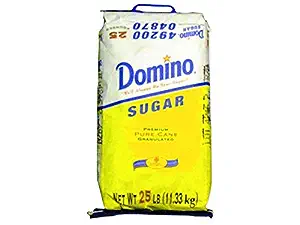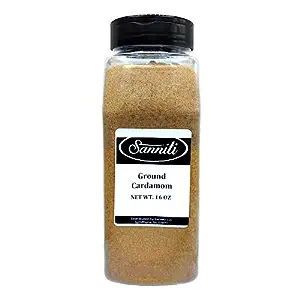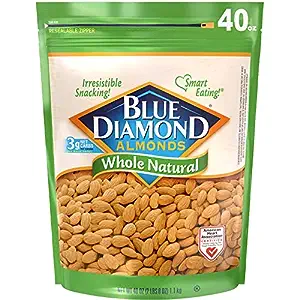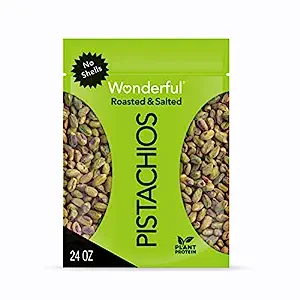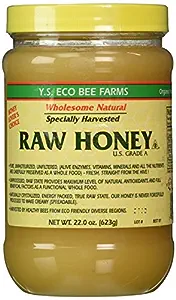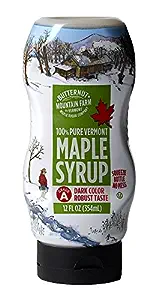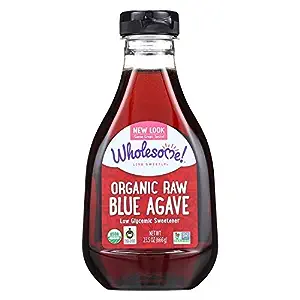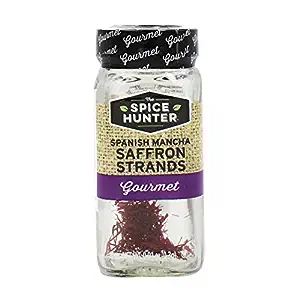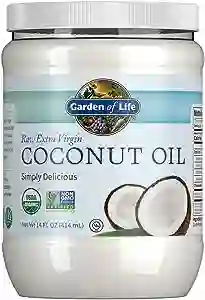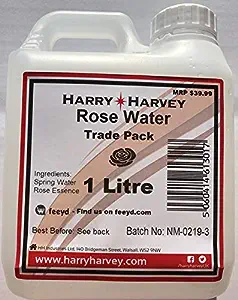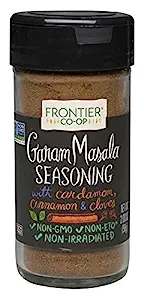Gajar Halwa: Recipes, Styles & Tips | Delicious Indian Dessert
Carrot Bliss: Unveiling the Art of Gajar Halwa
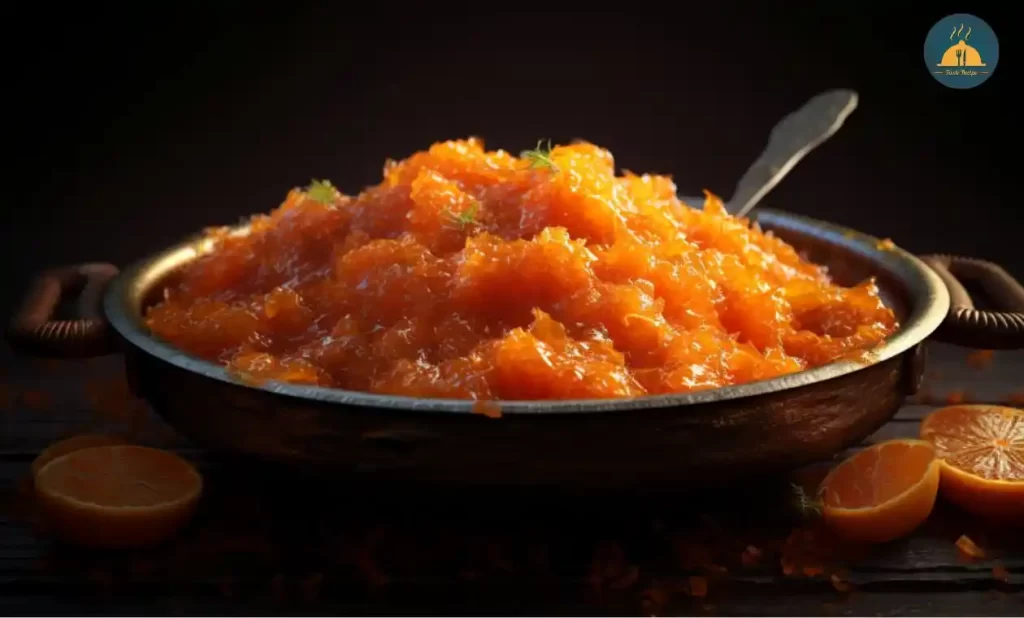
Gajar Halwa, the delightful Indian dessert, stands as a testament to the rich tapestry of flavors and traditions that define Indian cuisine. This sweet treat, often referred to as “Carrot Halwa,” has captured the hearts and taste buds of millions, both within and beyond the Indian subcontinent.
Gajar Halwa, at its essence, is a luxurious concoction made from grated carrots, slow-cooked to perfection with ghee, sugar, and a symphony of aromatic spices. It’s a dessert that embodies the warmth of home-cooked meals and the nostalgia of family gatherings. But what makes Gajar Halwa truly remarkable is its unparalleled popularity.
This dessert has transcended boundaries and found its way onto the dessert menus of Indian restaurants worldwide. Its sweet, creamy, and slightly nutty flavor profile, combined with the comforting familiarity of carrots, has made it a beloved dessert for all ages. Whether served hot in the winter months or chilled in the summertime, Gajar Halwa never fails to satiate the craving for something sweet and satisfying.
Beyond its delectable taste, Gajar Halwa carries a deep-rooted historical and cultural significance. This dessert has its origins in North India, where it was traditionally prepared during the winter months, using the seasonal abundance of sweet red carrots. The art of making Gajar Halwa was passed down through generations, turning it into a cherished family tradition.
In Indian culture, this dessert often finds its way to the dining table during celebrations and festivals. It symbolizes prosperity and is often associated with joyous occasions like weddings and religious ceremonies. The careful preparation of Gajar Halwa reflects the love and respect that Indian families hold for their culinary heritage.
As you delve into the world of Gajar Halwa through this blog, prepare to embark on a culinary journey that celebrates the fusion of tradition and innovation. We’ll explore not only the classic recipe but also exciting variations that cater to diverse tastes and dietary preferences. From the heartwarming embrace of the traditional version to the modern twists that redefine this classic, each bite of Gajar Halwa is a story waiting to be savored.
So, whether you’re a seasoned home cook or a novice in the kitchen, join us in unraveling the secrets of Gajar Halwa. Get ready to indulge your senses, ignite your creativity, and embark on a flavorful adventure that transcends borders and generations. Gajar Halwa is more than just a dessert; it’s a cultural treasure, a culinary masterpiece, and a journey worth taking. Welcome to the sweet world of Gajar Halwa!
Ingredients
Gajar Halwa, with its comforting blend of flavors and textures, relies on a handful of simple yet essential ingredients. Before we dive into the various styles and recipes, let’s familiarize ourselves with the components that make up this delectable dessert.
To craft a delightful serving of Gajar Halwa, you’ll need the following ingredients:
- Carrots: At the heart of Gajar Halwa are the sweet, red or orange carrots. They are grated to form the base of this dessert.
- Ghee: Ghee, or clarified butter, adds richness and depth to the halwa. It’s used for sautéing the grated carrots and imparts a delightful nutty aroma.
- Sugar: The sweetener of choice is granulated sugar, which caramelizes during the cooking process to lend sweetness to the dish.
- Milk: Whole milk is used to simmer the carrots, creating a creamy and luscious texture.
- Cardamom: Ground cardamom or crushed cardamom pods provide a warm, aromatic flavor that complements the sweetness of the dish.
- Nuts: Typically, slivered almonds and chopped pistachios are added to provide a delightful crunch and nutty undertones.
- Raisins: Golden raisins or regular raisins are used to infuse natural sweetness and a chewy texture.
These ingredients, when combined and prepared with care, create the magic that is Gajar Halwa. As we explore the different styles and recipes, you’ll see how minor variations in these components can lead to diverse and exciting flavors.
Traditional Gajar Halwa
Traditional Gajar Halwa, also known as “Gajar Ka Halwa,” is a timeless Indian dessert that exudes warmth and nostalgia. This style of Gajar Halwa is deeply rooted in culinary traditions and embodies the essence of homemade comfort food.
Unique Characteristics:
- Texture: What sets traditional Gajar Halwa apart is its rich, creamy, and slightly grainy texture. Grated carrots, slow-cooked in ghee and milk, melt into a velvety mixture that’s both comforting and indulgent.
- Aroma: As the carrots simmer, the kitchen is filled with the enticing aroma of ghee and cardamom. The fragrance is a prelude to the delightful taste that awaits.
- Flavor Profile: Traditional Gajar Halwa strikes a harmonious balance between the natural sweetness of carrots, the nutty richness of ghee, and the subtle spiciness of cardamom. It’s a sweet treat that’s not overly sugary but still immensely satisfying.
Ingredients
- 500 grams of fresh, sweet red or orange carrots, grated
- 3 tablespoons of ghee
- 1 cup of whole milk
- 1/2 cup of granulated sugar (adjust to taste)
- 1/2 teaspoon of ground cardamom
- Slivered almonds and chopped pistachios for garnish
- A handful of golden raisins (optional)
Instructions
- Heat the ghee in a heavy-bottomed pan or kadai over medium-low heat.
- Add the grated carrots and sauté them in ghee until they turn fragrant and their color deepens. This usually takes about 15-20 minutes, as the carrots release their moisture and start to reduce in volume.
- Pour in the milk and simmer the mixture on low heat. Stir occasionally to prevent sticking.
- As the carrots absorb the milk and become tender, add the sugar and ground cardamom. Continue to cook, stirring frequently, until the halwa thickens, and the sugar is fully dissolved. This can take 20-25 minutes.
- Optionally, add golden raisins for a burst of sweetness and a chewy texture.
- Once the halwa reaches a thick, pudding-like consistency and starts leaving the sides of the pan, it’s ready. Remove it from the heat.
- Garnish with slivered almonds and chopped pistachios for a delightful crunch and nutty flavor.
Traditional Gajar Halwa has deep roots in North Indian cuisine and culture. It originated in the region as a winter delicacy, taking advantage of the sweet and juicy red or orange carrots that are abundant during the cold months. Families would come together to grate carrots, slow-cook them in ghee and milk, and savor the rich dessert as a way to stay warm and celebrate the season.
This dessert is closely associated with festivals, celebrations, and special occasions, serving as a symbol of love and togetherness. It’s often prepared during Diwali, weddings, and family gatherings, where it’s served with great pride and joy.
A typical serving of traditional Gajar Halwa, approximately 100 grams, contains around 150-200 calories. Keep in mind that the calorie count can vary depending on factors like the amount of ghee and sugar used in the preparation.
Portion sizes can vary, but a small bowl or cup is a common serving size. It’s a rich dessert, so a little goes a long way in satisfying your sweet cravings. Enjoy it warm, perhaps with a scoop of vanilla ice cream, for the perfect indulgence.
Healthy Gajar Halwa
Healthy Gajar Halwa is a delightful twist on the classic dessert that allows you to indulge without guilt. This version retains the essence and flavors of traditional Gajar Halwa while making mindful ingredient choices to reduce calories and enhance nutritional value.
Key Adjustments for a Healthier Version:
- Carrots: Opt for sweet, fresh carrots, and grate them as usual. These vibrant vegetables are packed with vitamins and fiber, adding a healthful touch to the dish.
- Ghee Substitute: Instead of using ghee, consider alternatives like clarified butter made from unsalted butter or a heart-healthy oil like coconut oil. This reduces saturated fat while maintaining the dish’s richness.
- Sugar Replacement: Swap granulated sugar with natural sweeteners like honey, maple syrup, or agave nectar. These choices add sweetness with a lower glycemic index.
- Nuts and Raisins: While almonds, pistachios, and raisins are still delightful, use them sparingly to keep the calorie count in check. A smaller quantity can provide flavor and texture without excessive calories.
Ingredients:
- 500 grams of fresh, sweet red or orange carrots, grated
- 2 tablespoons of clarified butter (ghee) or a healthy oil
- 1 cup of whole milk or a dairy-free milk alternative
- 1/4 cup of honey, maple syrup, or agave nectar
- 1/2 teaspoon of ground cardamom
- A pinch of saffron strands (optional)
- Chopped almonds and pistachios for garnish
- A few golden raisins (optional)
Instructions:
- In a heavy-bottomed pan or kadai, heat the clarified butter (or healthy oil) over medium heat.
- Add the grated carrots and sauté them in the butter or oil until they become tender and aromatic. This should take around 15-20 minutes.
- Pour in the milk (or dairy-free milk alternative) and simmer the mixture on low heat. Stir occasionally to prevent sticking.
- As the carrots absorb the milk and become soft, add the honey, maple syrup, or agave nectar for sweetness. Continue to cook, stirring frequently, until the halwa thickens. This can take about 20-25 minutes.
- Optionally, infuse saffron strands in a tablespoon of warm milk and add them for a delightful aroma and a subtle color.
- If desired, add a small quantity of chopped almonds, pistachios, or golden raisins for texture and flavor.
Healthy Gajar Halwa offers several advantages:
- Lower Saturated Fat: By using a healthier oil or clarified butter, you reduce saturated fat content while retaining the dish’s savory richness.
- Reduced Sugar: Substituting natural sweeteners like honey or maple syrup for granulated sugar moderates the sugar content, making it a wiser choice for those monitoring their sugar intake.
- Nutritional Value: The abundance of fresh carrots in this version provides vitamins, minerals, and dietary fiber, enhancing the dessert’s nutritional profile.
- Weight-Friendly: The calorie count is lower than the traditional version, making it a more weight-friendly option.
A serving of healthy Gajar Halwa, approximately 100 grams, contains around 120-150 calories, depending on the choice of sweetener and oil used. This version is a guilt-free indulgence that allows you to savor the flavors of Gajar Halwa without compromising your health goals.
Vegan Gajar Halwa
Vegan Gajar Halwa offers a compassionate twist on this beloved dessert by excluding dairy products and incorporating plant-based alternatives. Here’s how to create a vegan-friendly version that’s as delightful as the traditional one.
Key Vegan Substitutions:
- Carrots: Start with the same fresh, sweet carrots and grate them as usual.
- Ghee Replacement: Instead of ghee, use vegan-friendly alternatives like coconut oil or vegan butter. These options impart a lovely, buttery flavor without the use of animal products.
- Milk Substitute: Opt for a dairy-free milk alternative such as almond milk, soy milk, or oat milk. These choices provide the creaminess of traditional milk without dairy.
- Sweetener: Replace granulated sugar with vegan sweeteners like maple syrup, agave nectar, or coconut sugar to maintain sweetness while staying plant-based.
Ingredients:
- 500 grams of fresh, sweet red or orange carrots, grated
- 2 tablespoons of vegan butter or coconut oil
- 1 cup of dairy-free milk (e.g., almond milk, soy milk, oat milk)
- 1/4 cup of vegan sweetener (maple syrup, agave nectar, or coconut sugar)
- 1/2 teaspoon of ground cardamom
- A pinch of saffron strands (optional)
- Chopped nuts (e.g., almonds, pistachios) for garnish
- A handful of golden raisins (optional)
Instructions:
- In a large pan, melt the vegan butter or coconut oil over medium heat.
- Add the grated carrots and sauté them until they become tender and release their aroma, which typically takes about 15-20 minutes.
- Pour in the dairy-free milk and simmer the mixture on low heat. Stir occasionally to prevent sticking.
- As the carrots absorb the dairy-free milk and become soft, add the vegan sweetener of your choice for sweetness. Continue cooking and stirring frequently until the halwa thickens. This can take around 20-25 minutes.
- Optionally, infuse saffron strands in a tablespoon of warm dairy-free milk and add them for a delightful aroma and color.
- If desired, add a small quantity of chopped nuts and golden raisins for added texture and flavor.
The availability of vegan-friendly versions of classic dishes like Gajar Halwa is of paramount importance in today’s culinary landscape. Here’s why:
- Inclusivity: Vegan options allow individuals with dietary restrictions, allergies, or ethical choices to enjoy the same delightful flavors and cultural experiences.
- Health Consciousness: Vegan choices can be lower in saturated fats and cholesterol, appealing to those with health-conscious diets.
- Environmental Impact: Plant-based recipes reduce the environmental footprint by avoiding the use of animal products, making them more sustainable.
- Cultural Appreciation: Vegan variations honor the culinary diversity within a culture, demonstrating that traditions can adapt to accommodate changing dietary preferences.
A typical serving of vegan Gajar Halwa, approximately 100 grams, contains around 110-140 calories, depending on the type of vegan sweetener and dairy-free milk used. This vegan option allows individuals to enjoy the indulgence of Gajar Halwa while aligning with their dietary preferences and values.
Taste Recipe Special Version
Welcome to the most exciting part of our culinary journey: the Taste Recipe Special Version of Gajar Halwa. Here, we dive into my own unique twist on this beloved dessert, incorporating special ingredients and techniques to create a one-of-a-kind culinary masterpiece.
My signature Gajar Halwa elevates the classic with a touch of sophistication. Here’s what sets it apart:
- Special Ingredient: The star of this version is the addition of saffron threads. Infused in warm milk, saffron imparts a luxurious aroma and a subtle, golden hue that elevates the visual and aromatic appeal of the halwa.
- Flavor Infusion: Alongside the traditional spices like cardamom, a hint of rosewater is added. This floral note adds a delicate, fragrant layer to the dessert, making it truly extraordinary.
- Nut Medley: While almonds and pistachios remain the heroes, they are joined by finely chopped cashews and a sprinkle of desiccated coconut, creating a delightful nut medley that provides contrasting textures.
Ingredients:
- 500 grams of fresh, sweet red or orange carrots, grated
- 3 tablespoons of ghee
- 1 cup of whole milk
- 1/2 cup of granulated sugar (adjust to taste)
- 1/2 teaspoon of ground cardamom
- A pinch of saffron strands, infused in 2 tablespoons of warm milk
- 1/2 teaspoon of rosewater (adjust to taste)
- A medley of chopped nuts (almonds, pistachios, cashews)
- A sprinkle of desiccated coconut
- Golden raisins for added sweetness and texture (optional)
Instructions:
- Heat the ghee in a heavy-bottomed pan over medium-low heat.
- Add the grated carrots and sauté them in ghee until they become fragrant and their color deepens (usually 15-20 minutes).
- Pour in the milk and simmer the mixture on low heat, stirring occasionally.
- As the carrots absorb the milk and become tender, add the sugar, ground cardamom, saffron-infused milk, and rosewater. Continue cooking and stirring until the halwa thickens (around 20-25 minutes).
- Optionally, add the medley of chopped nuts and desiccated coconut for a delightful crunch and flavor. You can also include golden raisins if you prefer.
The Taste Recipe Special Version of Gajar Halwa is a culinary symphony where every ingredient plays a unique role. Saffron lends an exquisite aroma and color, rosewater adds a touch of elegance, and the nut medley creates a delightful crunch. The result is a dessert that not only tantalizes your taste buds but also delights your senses.
This special version celebrates the art of Gajar Halwa by infusing it with creativity and flavors that make it truly extraordinary. Whether you’re looking to impress guests or simply treat yourself to something exceptional, this is the Gajar Halwa you’ve been dreaming of.
Tips and Recommendations
Creating the perfect Gajar Halwa is an art that requires attention to detail. Here are some tips and techniques to ensure your Gajar Halwa turns out flawless:
- Carrot Selection: Choose fresh, sweet, and preferably organic carrots. They should be juicy and vibrant in color.
- Grating Consistency: Grate the carrots uniformly to ensure even cooking. Use a fine grater for a smoother texture or a coarser one for a chunkier finish.
- Sautéing: Sautéing the grated carrots in ghee or oil is crucial. This step releases their natural sweetness and develops the flavor.
- Slow Cooking: Be patient during the simmering process. Slow cooking allows the carrots to absorb the flavors of the milk and spices, resulting in a rich, creamy texture.
- Sugar Control: Adjust the sugar to your taste. Start with a smaller amount and add more if needed. Remember that the sweetness will intensify as the halwa thickens.
- Spice Sensation: Experiment with spices. While cardamom is traditional, you can introduce a pinch of nutmeg or cinnamon for a unique flavor dimension.
- Texture Management: If you prefer a smoother texture, blend the cooked halwa in a food processor for a few seconds. For a chunkier finish, skip this step.
Variety is the spice of life, and Gajar Halwa can be customized in numerous ways:
- Fruit Fusion: Add fruits like pineapple chunks, grated apples, or dried fruits like figs and dates to introduce new flavors and textures.
- Nutty Delight: Besides almonds and pistachios, try cashews, walnuts, or hazelnuts for different nutty profiles.
- Flavored Milk: Experiment with flavored dairy or plant-based milk, like vanilla almond milk or coconut milk, to impart unique tastes.
- Sugar Alternatives: Explore healthier sweeteners like stevia, coconut sugar, or jaggery for a twist on sweetness.
- Colorful Garnishes: Enhance the visual appeal with a sprinkle of edible rose petals, finely chopped mint leaves, or a dash of edible gold or silver leaf.
Presenting Gajar Halwa beautifully enhances the overall dining experience. Here are some recommendations for serving, presentation, and garnishing:
- Serving Suggestions: Serve Gajar Halwa warm in small dessert bowls or cups. It’s often enjoyed with a scoop of vanilla ice cream or a dollop of fresh cream.
- Garnish Galore: Garnish with a handful of chopped nuts, a drizzle of saffron-infused milk, or a sprinkling of edible rose petals for a touch of elegance.
- Traditional Touch: For a traditional presentation, serve in terracotta bowls or clay pots for an authentic Indian aesthetic.
- Modern Elegance: If you prefer a contemporary presentation, consider serving in glass dessert cups, garnished with a single saffron strand for sophistication.
- Individual Portions: Portion the halwa into small ramekins or molds before serving for an individual and stylish presentation.
Remember, the presentation is not just about aesthetics but also about enhancing the overall dining experience. Whether you choose a traditional or modern approach, the beauty of Gajar Halwa lies not only in its taste but also in its visual appeal.
Our Recommended Ingredients
Ghee
Ghee, a type of clarified butter, adds a rich and nutty flavor to your Gajar Halwa. Its smooth texture makes it perfect for sautéing carrots to perfection.
Golden Raisins
Golden raisins provide a burst of natural sweetness and a delightful chewiness to your dessert. They’re like little drops of sunshine in your Gajar Halwa.
Granulated Sugar
Granulated sugar is the classic sweetener for Gajar Halwa. Its fine crystals dissolve smoothly to create the perfect level of sweetness.
Ground Cardamom
Ground cardamom lends a fragrant, slightly spicy note to your Gajar Halwa. It’s the secret spice that elevates the flavor profile.
Almonds
Almonds add a delightful crunch and a nutty richness to your Gajar Halwa. They’re the perfect topping for this iconic dessert.
Pistachios
Pistachios bring a lovely green hue, a satisfying crunch, and a mild, sweet flavor to your Gajar Halwa.
Honey
Honey is a natural sweetener that infuses your Gajar Halwa with its unique floral notes. It’s a healthier alternative for those watching their sugar intake.
Maple Syrup
Maple syrup is a liquid gold that adds a rich, earthy sweetness to your Gajar Halwa. It’s a flavorful alternative to traditional sweeteners.
Agave Nectar
Agave nectar is a low-glycemic sweetener that provides a gentle sweetness to your Gajar Halwa. It’s perfect for those seeking a healthier option.
Saffron Strands
Saffron strands are like threads of luxury that infuse your Gajar Halwa with an exquisite aroma and a hint of golden color.
Coconut Oil
Coconut oil is a versatile and healthier alternative to ghee for preparing your Gajar Halwa. It imparts a lovely, subtle coconut flavor.
Rosewater
Rosewater is the essence of elegance that adds a delicate floral aroma to your Gajar Halwa. It’s a touch of sophistication for your dessert.
In Crux
In this delectable journey through the world of Gajar Halwa, we’ve explored the various styles and flavors of this beloved Indian dessert. From the traditional comfort of “Gajar Ka Halwa” to healthier and vegan alternatives, and even a signature Taste Recipe Special Version, we’ve uncovered the secrets to creating this sweet masterpiece.
We’ve learned about the historical and cultural significance of Gajar Halwa, its deep-rooted ties to Indian traditions, and its role in celebrations and family gatherings. Each style offers a unique experience, allowing you to choose the one that best suits your taste and dietary preferences.
Now, it’s your turn to embark on this culinary adventure. Try your hand at crafting your favorite style of Gajar Halwa, be it the classic, healthy, or vegan version. Experiment with ingredients, savor the aromas and let the rich flavors transport you to a world of gastronomic delight.
We’d love to hear about your Gajar Halwa experiences. Share your thoughts, tips, and personal twists on social media, or drop us a comment on this blog post. After all, the joy of cooking is not only in the creation but also in sharing the love for food with others.
So, gather your ingredients, fire up your stove, and create your own Gajar Halwa masterpiece. Whether it’s a special occasion or a simple craving for sweetness, Gajar Halwa is here to delight your senses and warm your heart. Happy cooking, and bon appétit!
FAQs about Gajar Halwa
Can I make Gajar Halwa using any type of carrot?
While you can technically use any type of carrot, it's best to use sweet, fresh red, or orange carrots for the most authentic and flavorful Gajar Halwa. These carrots are naturally sweeter and contribute to the dessert's rich taste.
Is Gajar Halwa a healthy dessert option?
Traditional Gajar Halwa is a rich and indulgent dessert, so it's not typically considered a healthy food. However, there are healthier variations available that use substitutions like vegan ingredients, healthier oils, and natural sweeteners. These options can make Gajar Halwa a more health-conscious choice.
How do I adjust the sweetness of Gajar Halwa to my taste?
You can adjust the sweetness of Gajar Halwa by varying the amount of sugar or sweetener you add during the cooking process. Start with a smaller quantity and taste as you go. Remember that the sweetness intensifies as the halwa thickens, so you can add more sugar if needed.
Can I make Gajar Halwa in advance and store it?
Yes, Gajar Halwa can be made in advance and stored in the refrigerator for a few days. Reheat it on the stovetop or in the microwave before serving. It can also be frozen for longer-term storage.
What are some creative variations of Gajar Halwa?
There are numerous creative variations of Gajar Halwa, including adding fruits like pineapple or apples, using different nuts like cashews or walnuts, or experimenting with flavored milk. You can also try using alternative sweeteners like maple syrup or jaggery for unique twists.
Can I make Gajar Halwa without dairy products?
Yes, you can make vegan-friendly Gajar Halwa by substituting dairy products with plant-based alternatives like almond milk, soy milk, or coconut milk. Use vegan butter or coconut oil instead of ghee, and vegan sweeteners like maple syrup or agave nectar.
What's the significance of Gajar Halwa in Indian culture?
Gajar Halwa holds cultural significance in India and is often associated with celebrations and special occasions. It's considered a symbol of prosperity and is served during festivals, weddings, and family gatherings, signifying love and togetherness.
Can I make Gajar Halwa with pre-packaged grated carrots?
While it's more common to grate fresh carrots for Gajar Halwa, you can use pre-packaged grated carrots for convenience. Just ensure they are of good quality and not too dry.
What's the best way to serve Gajar Halwa for a visually appealing presentation?
For an elegant presentation, serve Gajar Halwa in glass dessert cups or small bowls. Garnish with a sprinkle of chopped nuts, a drizzle of saffron-infused milk, or a few edible rose petals. The visual appeal enhances the overall dining experience.


